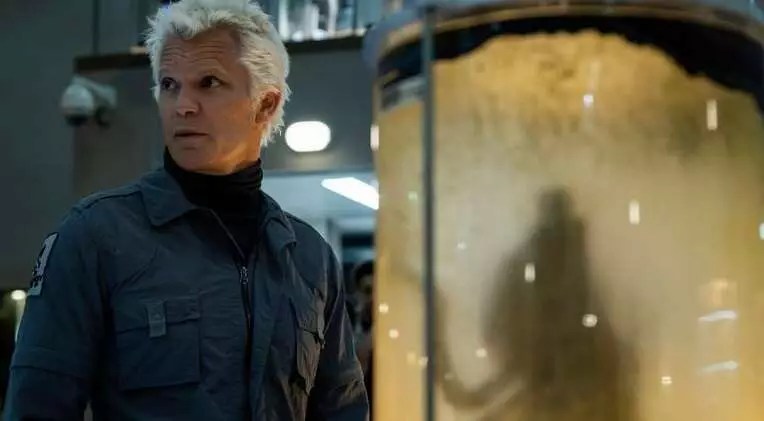The Alien franchise, an enduring cornerstone of science fiction horror, has continuously sparked debate among fans and critics alike. With each installment, from Ridley Scott’s groundbreaking 1979 masterpiece to the controversial entries and prequels, the series has evolved, often diverging significantly either in tone, style, or thematic focus. This ongoing discourse reveals a fundamental human desire: to understand, categorize, and find coherence within a universe that consistently challenges our expectations. While fans may argue endlessly over which film captures the franchise’s essence most effectively, a key insight emerges from these discussions—each film, regardless of its reception, contributes a piece to a larger, complex puzzle. The recent approach by showrunner Noah Hawley signifies a conscious effort to shore up these fragmented pieces into a more cohesive, visionary narrative that reinvigorates the franchise’s core mystique and horror elements.
Hawley’s acknowledgment of the diversity within the series is notable. Rather than dismissing the more eccentric entries—like Jean-Pierre Jeunet’s *Alien: Resurrection*—he recognizes the uniqueness each director brought to their vision. This perspective underscores a crucial idea: the franchise’s strength lies not only in its consistency but in its capacity for reinvention. It is tempting, however, to romanticize the original film’s minimalist, retro-futuristic aesthetic as the gold standard. Hawley’s conscious decision to focus primarily on the first two films suggests a desire to ground the series in what feels authentic and visually compelling. The reliance on retro-futurism offers a nostalgic appeal that continues to resonate, especially in an era where sleek, hyper-modern design often overtakes classic sci-fi aesthetics. This nostalgia is not mere sentimentality but an intentional craft, grounding the series’ universe in something tangible and timeless.
Rekindling the Mystery: The Art of Reinventing the Xenomorph
A defining element that separates the Alien franchise from countless other sci-fi horror stories is the Xenomorph’s terrifying mystique. Hawley’s desire to “re-mystify” the creature acknowledges that overexposure and franchise fatigue threaten its core horror appeal. The creature, with its grotesque lifecycle, has undergone numerous iterations—each more grotesque and surprising than the last. Yet, Hawley astutely observes that audiences have become wary of the predictable shocks: facehuggers, chestbursters, giant clones, and increasingly monstrous forms. The franchise’s challenge now is to preserve that initial sense of horror while avoiding redundancy.
What Hawley proposes is a deliberate reimagining—an attempt to reinvent the creature’s story and purpose so that each appearance feels fresh and genuinely unpredictable. This approach isn’t merely about scaring viewers anew; it’s an effort to deepen the creature’s lore and embed it into the existential questions the franchise routinely explores. It’s about elevating the Xenomorph from a mere predator to a symbol of human hubris and the unpredictable nature of biological and technological experimentation. Nevertheless, this is a risky endeavor—fracturing the audience’s familiarity could backfire, potentially alienating fans who cherish the creature’s traditional design and mythology. Yet, without pushing boundaries, the franchise risks stagnating in its own mythology, losing relevance in a rapidly evolving genre landscape.
Balancing Innovation and Respect for Origins
The tension between innovation and reverence is at the heart of the franchise’s ongoing narrative development. Hawley’s emphasis on drawing from the first two films suggests a preference for a stylized, nostalgic aesthetic—one that prioritizes atmosphere and mood over the hyper-advanced, sterile visions presented in some prequels like *Prometheus* or *Alien: Covenant*. This aesthetic choice aligns with a broader cultural yearning for authenticity and tactile realism, particularly in a digital age flooded with hyper-polished visuals. It’s a reminder that sometimes, simplicity and historical fidelity can wield more power than cutting-edge technological gimmicks.
But this approach also raises challenging questions: can the franchise maintain its relevance without embracing new visual innovations? Can a series rooted in retro-futurism adapt to contemporary tastes without feeling outdated? Hawley’s focus indicates a belief that the core of Alien lives in its visceral, textured atmosphere—a testament to how deeply aesthetic choices influence storytelling. It underscores the idea that innovation need not always mean high-tech effects but can also involve smarter storytelling, layered characters, and a revitalized mystery around the creature’s origins.
Hawley’s candid reflection reveals an understanding that the franchise’s future hinges not only on technical or stylistic updates but on its ability to evoke genuine emotional and psychological responses. The Alien universe, after all, is about more than just scary monsters; it’s about confronting our fears of the unknown, our vulnerability before nature’s unchecked monstrosities, and the moral ambiguities of scientific hubris. The way forward involves respecting these themes while daring to reframe and challenge them—always keeping the audience guessing, always leaning into the horror of what we don’t yet understand.


Leave a Reply